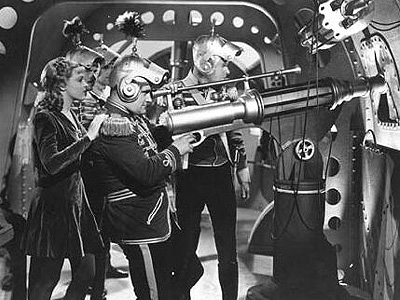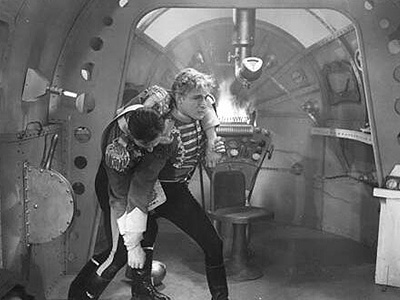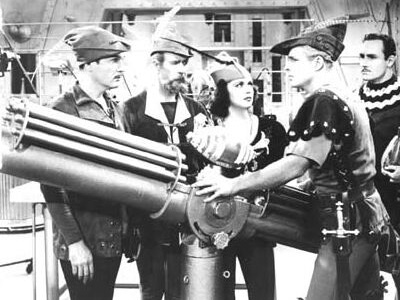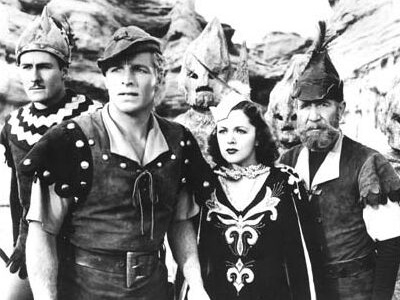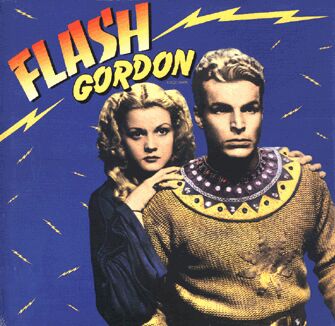
Adapted almost directly from the original comics, Flash Gordon gained an unusual amount of praise in 1936 by politicians who associated the storyline, with its emphasis on aerial fighting ships, with the New Deal. Consequently, Flash surpassed the popularity of Buck Rogers, an older but very successful comic strip. Universal bought the rights to Raymond’s creation and turned it into a major motion picture with a budget of $350,000, roughly twice that of other serial films at the time.
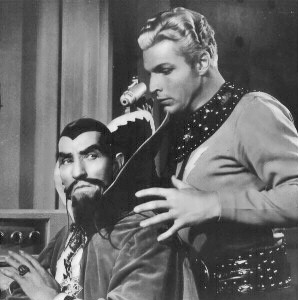 | 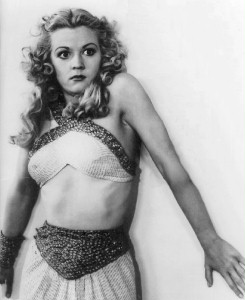 |
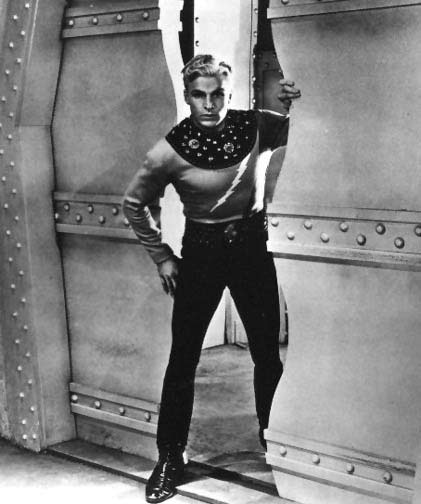
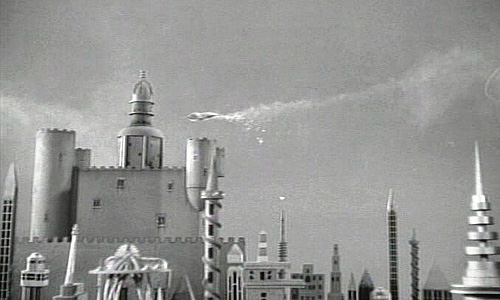
Flash Gordon was produced in 13 chapters, containing strong adult themes, beyond those common in films at the time. Flash Gordon showed women who flaunted their sexuality and fought over their men. Critics went crazy over the love triangles shown in the serial. Rather than halting the production, it made the series even more successful. Larry “Buster” Crabbe and Jean Rogers brought the main characters of Flash Gordon and Dale Arden to life on the large screen.
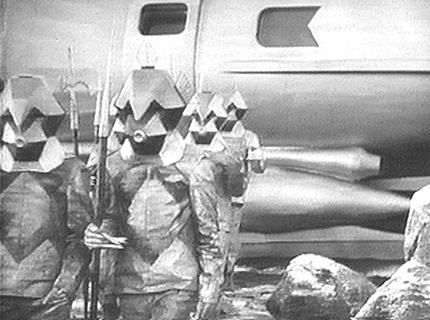 | 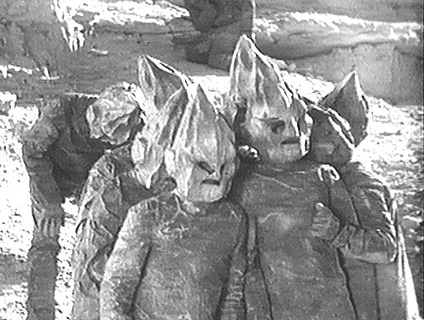 |
Directed by Frederick Stephani, the serial showed Dr. Alexis Zarkov, a European accented madman-scientist played by Frank Shannon, and the evil Ming the Merciless, a character played by Charles Middleton modeled after the immensely popular Sax Rohmer character, Dr. Fu Manchu. Like the Buck Rogers villains, and following the foundations laid out in the original comic strip, the adversaries of Flash Gordon were derived from Mongolian-Chinese cultures that played upon fears remaining from the Chinese “Boxer Rebellion” decades before. The limited communications and travel of the time made the far away cultures of the Far East ideal source material for truly threatening villains.
Princess Aura, played by the voluptuous Priscilla Lawson, shocked audiences with her overt sexual advances towards the humble hero Flash. She was strong, forceful, and wanton in her lust, just as American viewers knew the women of the Far East must be.
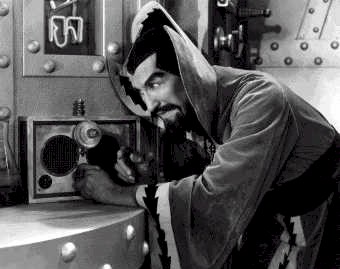
American prejudice played largely into the scripts. The wandering planet Mongo was copied the Gobi Desert. Its ruler, Ming, controlled a galactic version of the Chinese Ming Dynasty. Like Rohmer’s Fu Manchu, Ming had a passion for strange technology and hidden arts. He greatly desired Dale Arden to be part of his harem and used drugs and other unscrupulous methods to take away her will and make her submit to his advances.
Despite the huge budget, the serial did have to make some concessions. Some sets were actually reworked leftovers from Universal’s earlier 1932 hit, “The Mummy”. In this setting, Flash was trapped and had to battle a giant lobster-clawed dragon. Portions of Ming’s castle were compiled from reworked elements used in the original “Frankenstein”. Roman legionnaire costumes were updated with gun belts and hand blasters to provide additional obstacles for Flash to overcome. Flash Gordon faced a number of such adversaries during his battles to prevent Ming from becoming the the “Emperor of the Universe”. By uniting the exotic species under Ming’s tyranny, Flash was able to defeat the evil menace and consequently, save Earth.
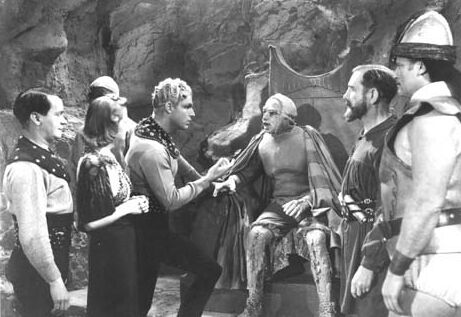
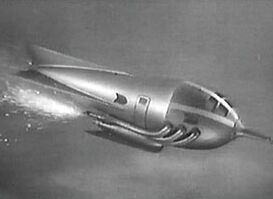
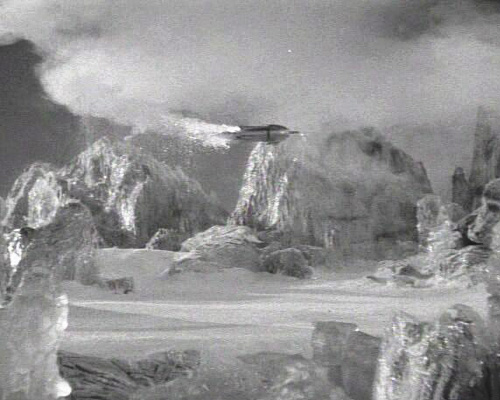
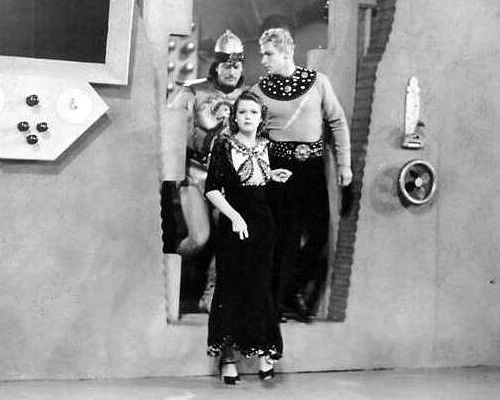
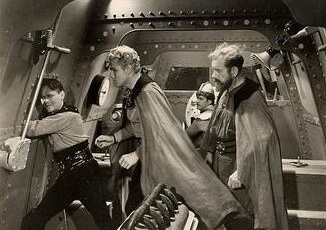 | 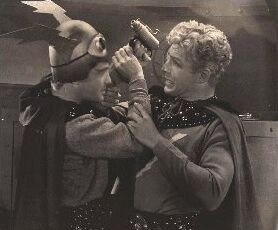 |
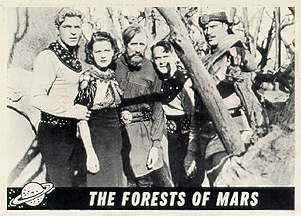
The serial was such a huge success that Universal continued the adventures in another serial in 1938 that was later edited into the feature film, Flash Gordon’s Trip to Mars. In the second serial, directed by Ford Beebe and Robert F. Hill, Flash fought to save Earth from Ming the Merciless who had begun raiding Earth to steal its oxygen supply. Concurrently, Ming’s queen wanted to capture humans for material as she’d learned to turn them into clay.
Although far less of a hit at that time, the basic story concept was apparently revived for the television miniseries “V”, although in that incarnation the aliens were stealing water instead of oxygen and the humans were simply being used as food.
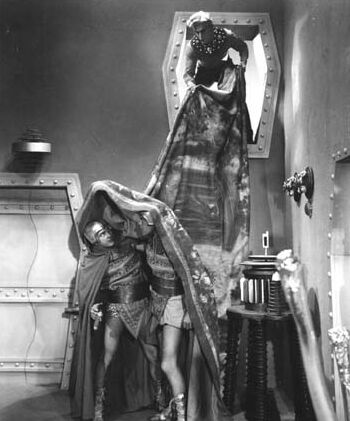
Ford Beebe managed to convince Universal to give the serial a last fling. In 1940, they released a last set which was later edited into the feature film Flash Gordon Conquers the Universe. In this adventure, Flash again battled Ming the Merciless who met his doom in this very weak sequel to the previous serials. With Ming dead and the studios losing interest in Flash, the franchise fell silent.
